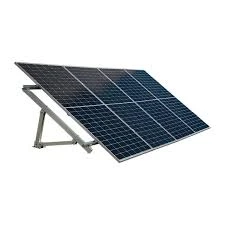Impact of Elevated Temperatures on Solar Panel Efficiency and Performance Analysis
Solar Panel Efficiency at High Temperatures
Solar energy is one of the most promising renewable energy sources, and its importance continues to grow as the world seeks sustainable alternatives to fossil fuels. Photovoltaic (PV) solar panels are a key technology in harnessing solar energy. While many factors influence their efficiency, temperature is a critical aspect that can significantly affect their performance.
Solar panels are typically rated at a standard test condition (STC) of 25°C (77°F). At this temperature, the efficiency metrics are often defined, and manufacturers provide specifications based on these conditions. However, in real-world applications, especially in sunny regions, solar panels frequently operate at much higher temperatures. As temperatures rise, the efficiency of solar panels typically decreases.
The primary reason for this decrease in efficiency at elevated temperatures lies in the semiconductor materials used in traditional silicon-based solar cells. As the temperature increases, the energy bandgap of the semiconductor reduces, leading to a higher generation of electron-hole pairs even in the absence of light. While this might sound beneficial at first glance, it actually results in increased recombination losses. These losses diminish the overall power output of the solar cells, leading to a phenomenon known as the temperature coefficient of power.
Typically, the temperature coefficient for crystalline silicon solar panels is around -0.4% to -0.5% per degree Celsius above 25°C. This means for every degree that the temperature rises, the output power decreases by approximately 0.4% to 0.5%. For instance, if the ambient temperature is 40°C (104°F), which is quite common in many sunny regions, the efficiency could drop by as much as 7.5% from its rated power at STC. This substantial reduction highlights the importance of understanding temperature effects when designing and installing solar power systems.
solar panel efficiency at high temperatures

To mitigate the impacts of high temperatures on solar panel performance, several strategies can be employed. One common approach is to utilize solar panels with improved thermal characteristics. For example, thin-film solar panels and certain advanced technologies exhibit lower temperature coefficients compared to traditional crystalline silicon panels. This can make them more suitable for hot climates.
Installation practices can also play a crucial role in managing temperature. Elevating solar panels to allow for adequate airflow beneath them can help dissipate heat and keep their operating temperature lower. Additionally, using reflective coatings or choosing installation angles that limit direct sunlight exposure during the hottest part of the day can further help maintain optimal performance.
Another innovative approach to improve solar panel efficiency at higher temperatures is the adoption of hybrid systems, which combine photovoltaics with other technologies like concentrated solar power (CSP) or thermal energy storage. These systems can balance energy production and enhance overall efficiency, ensuring better performance even in extreme heat.
Moreover, ongoing research in materials science is paving the way for the development of new materials that can maintain efficiency at higher temperatures. Innovations such as perovskite solar cells and other next-generation materials show promise in this regard, and their commercial deployment could revolutionize solar energy production in hot climates.
In conclusion, while high temperatures pose a significant challenge to solar panel efficiency, understanding the dynamics of temperature effects can lead to the adoption of effective design, installation, and material strategies. As we continue to push for more sustainable energy solutions, addressing the thermal performance of solar panels will be crucial for maximizing their output and contributing to a greener future. With advancements in technology and ongoing research, the potential for solar energy remains vast, even in the face of soaring temperatures.
-
Unlocking Energy Freedom with the Off Grid Solar InverterNewsJun.06,2025
-
Unlock More Solar Power with a High-Efficiency Bifacial Solar PanelNewsJun.06,2025
-
Power Your Future with High-Efficiency Monocrystalline Solar PanelsNewsJun.06,2025
-
Next-Gen Solar Power Starts with Micro Solar InvertersNewsJun.06,2025
-
Harnessing Peak Efficiency with the On Grid Solar InverterNewsJun.06,2025
-
Discover Unmatched Efficiency with the Latest String Solar InverterNewsJun.06,2025







